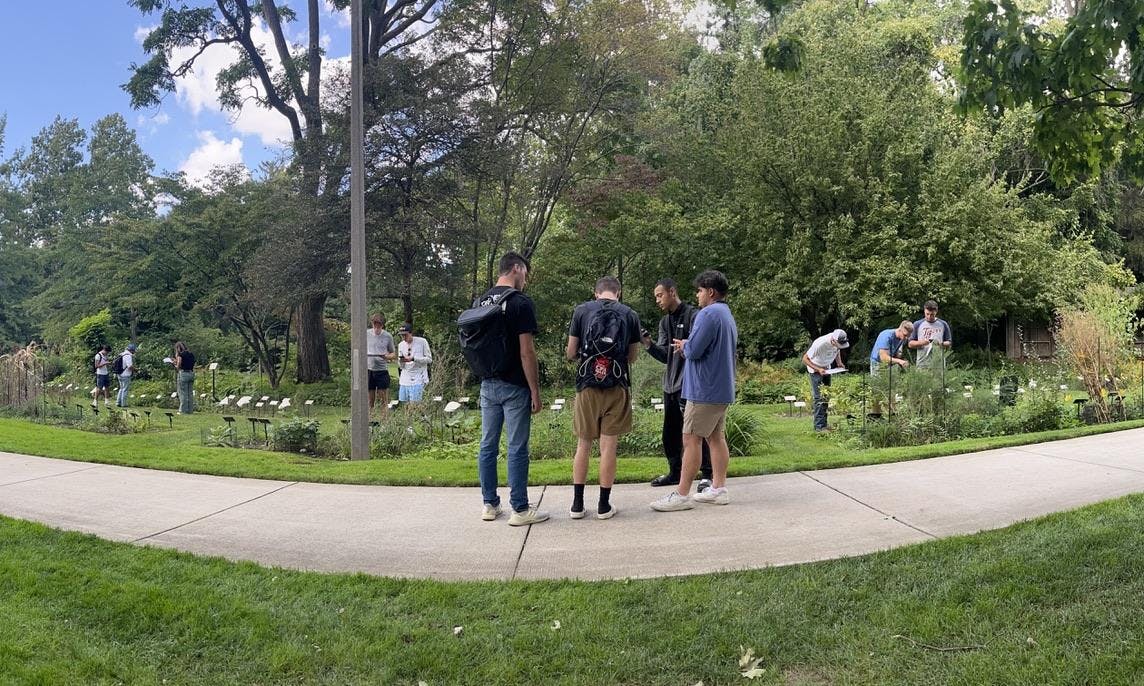The W. J. Beal Botanical Garden was founded over 150 years ago and has been a place for education, research and student wellbeing. A century later, the garden is facing some changes as the impact of invasive species becomes more understood.
"We want to be good stewards of the environment, and being situated along the Red Cedar River right on campus is a beautiful place for us to be, but of course that also means occasionally the garden floods and we can actually introduce weeds into the riverside," interim director of Beal Botanical Garden Alan Prather said.
When the river floods, the water lifts seeds out of the soil and carries them to other places along the banks. Prather said the garden staff are doing the best they can to be better wards of the environment, even if it means lessening the variety of species offered.
"We have stopped importing plants from other countries," Prather said. "We’re never going to do it again."
Under certain circumstances, when the plants are necessary for education and research, the garden might house non-native plants. Even then, they will be planted in ways to mitigate any threat. Growing them in pots and picking up the flowers they produce are some examples Prather gave.
The garden has implemented a new invasive species policy that outlines what can’t be grown in the garden. Plants on the Michigan Prohibited and Restricted Species list and the Michigan Watch List will not be allowed. They are also monitoring the current plants for signs of invasiveness. Their criteria is listed here and includes removing plants that are found in three or more places where they weren’t intentionally planted.
"We will just do what we can to mitigate the environmental impact while maximizing the education component, and try to do that in a way that hopefully gets us to a happy compromise," Prather said.
Erin Hill, one of the professors who uses the garden for education, said her Crop and Soil Sciences class learns to identify species there so they can recognize and manage them. After studying the species, they test the accuracy of plant-identifying apps and Hill writes an article each year to help Michigan residents choose which apps to trust.
"I think the garden is a very special place and I always like being able to take the students there and use it in our labs, both for the history and for the resources it has available to us for hands-on demonstration," Hill said.
While her weed science class can benefit from looking at invasives, Hill said the garden is doing the right thing.
"There’s other ways I can teach the students about invasive species," Hill said. "We can grow some of them in a controlled environment like the greenhouse, or we can use photos that we have. We can also use pressed samples at MSU’s herbarium."
Hill said she participates in reporting invasive species when she sees them on campus, and it's a good thing the garden is not curating them anymore as it would just add to the problem. Once she reported black swallow-wort, and within a couple days, Carolyn Miller responded and treated the plant.
Miller, the arboretum and invasive species coordinator, said invasive species can ruin habitats.
"They encroach on these incredible habitats and they can change the floral composition, the chemistry of the soil, and exclude the native flora," Miller said.
Miller has been removing plants determined as invasive in the garden, along the river and in some of MSU’s green spaces like the Sanford Natural Area at the northeast part of campus and the Baker Woodlot in the southeast corner of Farm Lane and Service Road.
There are still some invasive species Miller is attempting to eradicate and remove from Beal’s collection. Miller said she removed the garden’s white swallow-wort plants just for being similar to the black swallow-wort.
"I wanted it out because it’s in the same genus, it's a different species, but could have the same tendencies as the other two," Miller said. "There’s a couple species we thought we had eradicated from the collection but they sprung back up again and we’re working on getting those taken care of. They’re just a little persistent."
According to Miller, there are several invasives found on MSU’s campus that can cause damage, including honeysuckle, buckthorn and black swallow-wort.
Miller said her biggest priority remains in the garden, especially in the areas along the river. The garden’s weed collection is located in the plot closest to the river.
"That’s also something we are going to change as we’re going to move those plants further from the river," Prather said. "We’re looking at options now and seeing where we can put them to get them completely out of the zone of the garden that floods, and that will help mitigate that damage."
Support student media!
Please consider donating to The State News and help fund the future of journalism.
Prather has hired an architecture firm to create a new land use plan where the weed section is moved away from the banks. There is no start date for the project, but Prather said it will be within the year after the completion of the plan, which is projected to be finished in December.
Discussion
Share and discuss “Beal Botanical Garden to remove invasive species ” on social media.







